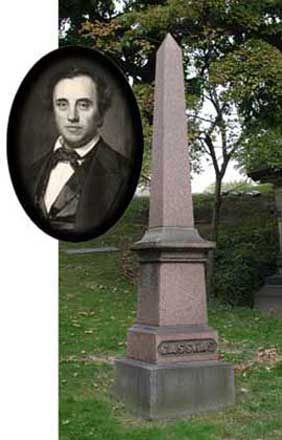 John Cassels (1808-1879) was born in Stirling, Scotland and moved to Utica, New York in 1827. He graduated from the College of Surgeons of Western New York at Fairfield in 1834. Cassels was a naturalist-physician who was very interested in botany, mineralogy and geology. He was a co-founder of the Western Reserve University Medical Department (which evolved into Case Western Reserve University School of Medicine).
John Cassels (1808-1879) was born in Stirling, Scotland and moved to Utica, New York in 1827. He graduated from the College of Surgeons of Western New York at Fairfield in 1834. Cassels was a naturalist-physician who was very interested in botany, mineralogy and geology. He was a co-founder of the Western Reserve University Medical Department (which evolved into Case Western Reserve University School of Medicine).
In 1845 Cassels explored the upper Mississippi, and the northern Michigan peninsula, looking for copper and iron ore deposits for a Cleveland Company, the Dead River & Ohio Mining Company. Claims filed from these expeditions enabled Cleveland to dominate the iron fields of the North for many years. In 1866, at the request of the trustees of the waterworks, Cassels published an analysis of Cleveland’s water supply. Cassels took samples at several stations and concluded sediment in the water was of clay and vegetable matter and increased greatly after storms. Cassels also noted that tie-in pipes to the water mains were by law to be made of lead, he chastised the trustees about this requirement pointing out that even the Romans knew better.
Source: Medicine in Cleveland and Cuyahoga County: 1810-1976 / edited by Kent L. Brown Cleveland OH; The Academy of Medicine of Cleveland 1977.

